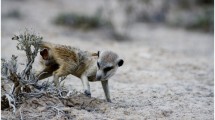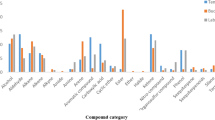Abstract
We investigated how information about family membership is coded by the individually specific anal gland secretion (AGS) in the beaver, Castor canadensis. Because beavers live in strict family units and relatives share more features in the AGS profile than non-relatives, family members share more AGS features than non-family members. Therefore, family recognition seems to be a natural consequence of the more specific kin recognition. Multivariate statistical analyses revealed two possibilities in coding for family membership using the multi-component AGS: either two (female) to three (male) AGS compounds or many compounds were used, but we were not able to determine which possibility is more likely. Compounds were not equally important in coding family membership information, and the interactions among compounds were complex. We attempted to reconstruct a lineage tree for the relationship among different families using two–three or many compounds. We found there was no significant difference for trees constructed by using few or many compounds in either males or females. However, the trees derived from male compounds and female compounds lacked good congruence.
Similar content being viewed by others
Author information
Authors and Affiliations
Additional information
Received: 10 December 1998 / Accepted after revision: 13 July 1998
Rights and permissions
About this article
Cite this article
Sun, L., Müller-Schwarze, D. Anal gland secretion codes for family membership in the beaver. Behav Ecol Sociobiol 44, 199–208 (1998). https://doi.org/10.1007/s002650050532
Issue Date:
DOI: https://doi.org/10.1007/s002650050532




